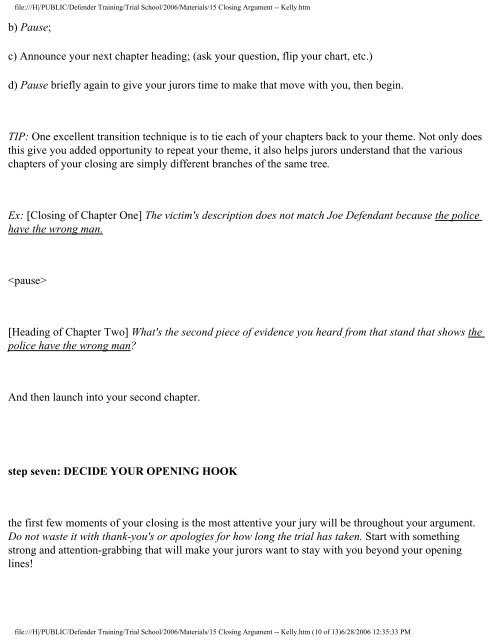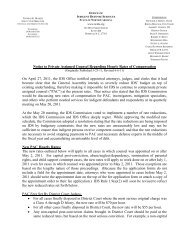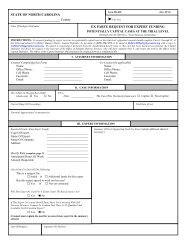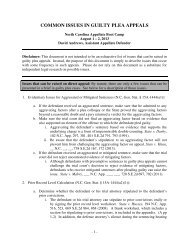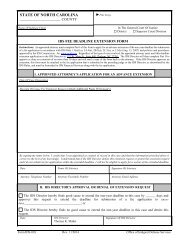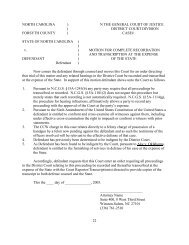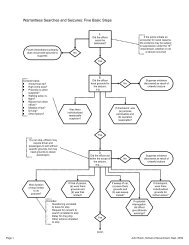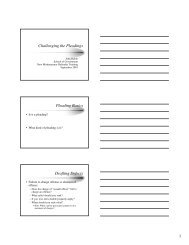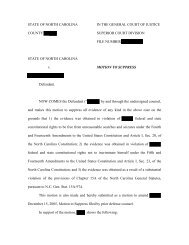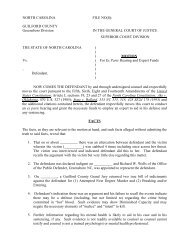a Ten-Step Guide to CLOSING ARGUMENT
a Ten-Step Guide to CLOSING ARGUMENT
a Ten-Step Guide to CLOSING ARGUMENT
- No tags were found...
You also want an ePaper? Increase the reach of your titles
YUMPU automatically turns print PDFs into web optimized ePapers that Google loves.
file:///H|/PUBLIC/Defender Training/Trial School/2006/Materials/15 Closing Argument -- Kelly.htmb) Pause;c) Announce your next chapter heading; (ask your question, flip your chart, etc.)d) Pause briefly again <strong>to</strong> give your jurors time <strong>to</strong> make that move with you, then begin.TIP: One excellent transition technique is <strong>to</strong> tie each of your chapters back <strong>to</strong> your theme. Not only doesthis give you added opportunity <strong>to</strong> repeat your theme, it also helps jurors understand that the variouschapters of your closing are simply different branches of the same tree.Ex: [Closing of Chapter One] The victim's description does not match Joe Defendant because the policehave the wrong man.[Heading of Chapter Two] What's the second piece of evidence you heard from that stand that shows thepolice have the wrong man?And then launch in<strong>to</strong> your second chapter.step seven: DECIDE YOUR OPENING HOOKthe first few moments of your closing is the most attentive your jury will be throughout your argument.Do not waste it with thank-you's or apologies for how long the trial has taken. Start with somethingstrong and attention-grabbing that will make your jurors want <strong>to</strong> stay with you beyond your openinglines!file:///H|/PUBLIC/Defender Training/Trial School/2006/Materials/15 Closing Argument -- Kelly.htm (10 of 13)6/28/2006 12:35:33 PM


